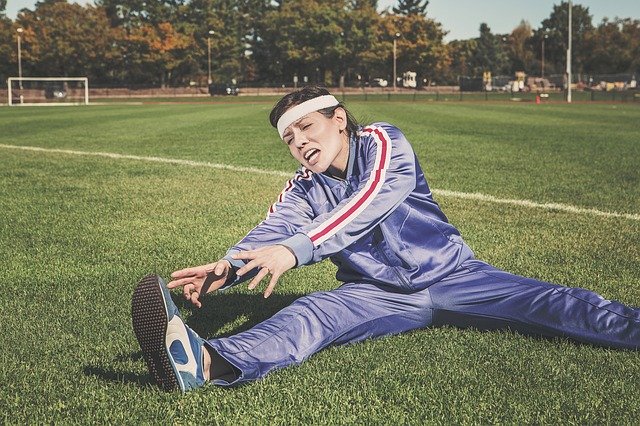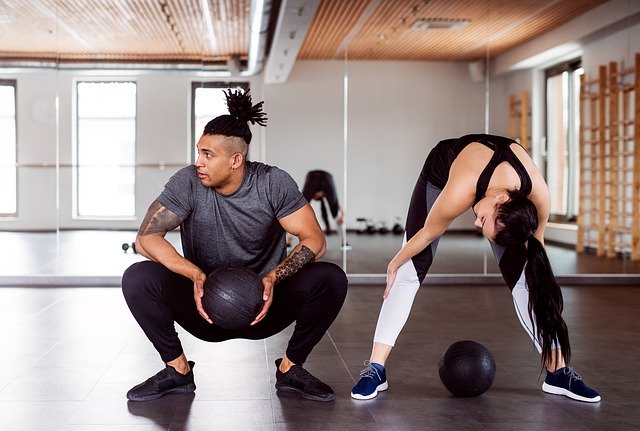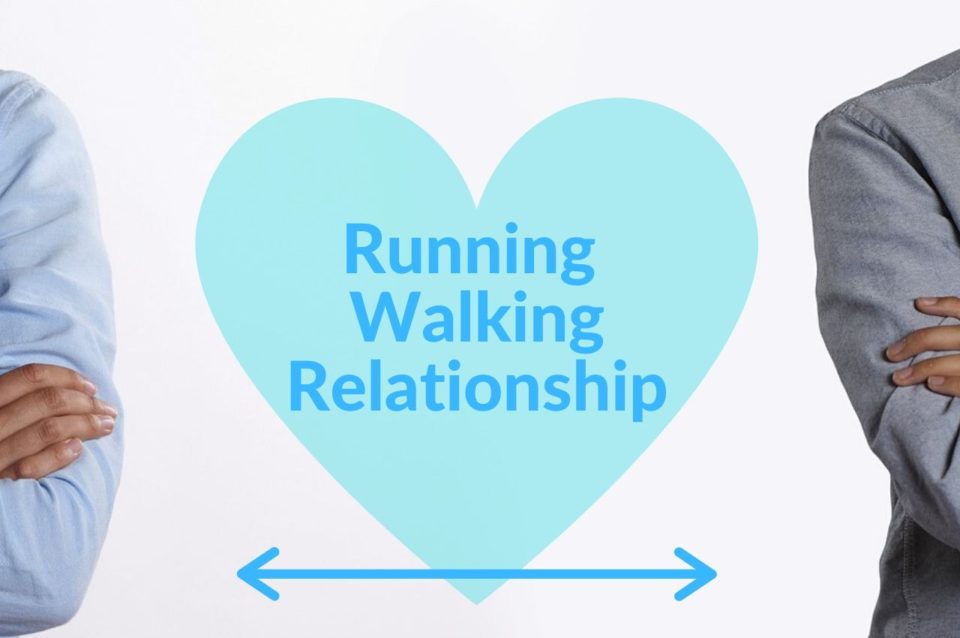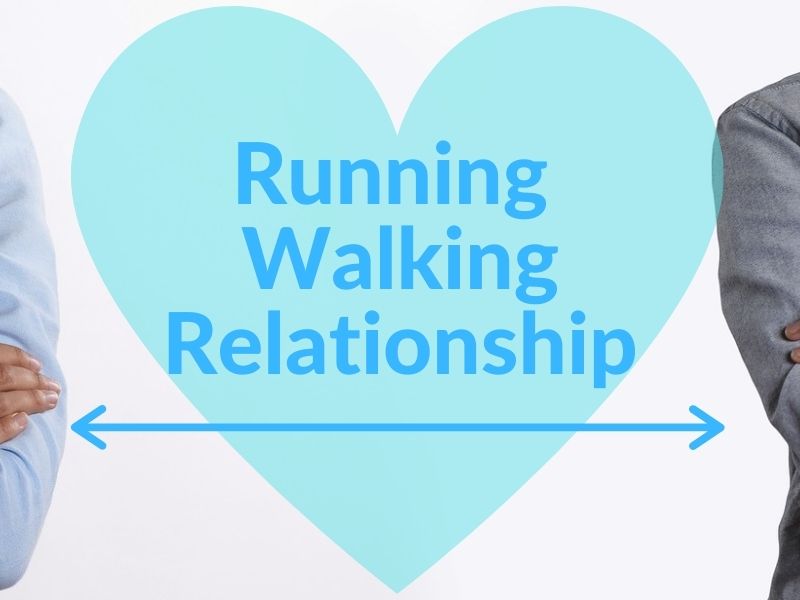When I go walking outside I usually spend about half an hour walking the same route and listening to music. Sometimes I’ll go running on the same path but my distance is almost doubled. Both experiences can be positive and enjoyable; so which is the best?
Walking is better for those beginning to exercise after a while of no exercise and low-intensity running can be better for those used to exercising. Intense running can lead to short and long-term injuries where periods of recovery are required.
If I were to give someone my advice for running and walking, I’d say that a combination of both can lead to a healthy outcome. One’s situation needs to be taken into consideration to determine which is most beneficial for overall health.
Determine your Fitness Level – Should I Walk or Run?

If you’ve ever run before, you know that it can be difficult to get started. Even those who have been running for years tend to find their bodies may feel uncomfortable for a while at the beginning of their run. Walkers tend to have an easier time getting used to the routine of walking, although recovery for both groups can be similar in some ways.
To determine your fitness level, you can walk for 30 minutes and see how your body reacts. If you’re fine after the walk and your legs don’t hurt after a couple of days then you might be ready to start a running test. If you are struggling during your walk, and find achy legs the day or two after your walk, then you are likely at a beginning level to medium level of exercise fitness.
If you tend to be a beginning-level exerciser, you will most likely benefit from more walking than running. Walking can help you get your body use to some of the movements that are needed when running as well.
After you’ve gotten used to walking for 30 minutes, then running can be substituted for small periods of your walk. In the beginning, start slowly if you have little experience with running or if your body is not ready for it yet.
Once you’re ready, running can be better for you in some ways that walking can’t. You will be using some different muscles, especially your heart muscle. With longer periods of cardio exercise, your body behaves differently than it would when just walking.
Each person is different, and there’s a wide spectrum of fitness levels. To determine your fitness level, you can use this chart as a reference, although it lacks specific information about each person, it can be used as a guide.
Always consult your doctor before beginning an exercise program. Getting help from a personal trainer or experienced peer that has some experience.
Fitness Levels

Beginners Fitness
You may be like me when I began, exercising occasionally but never being consistent.
When you exercise for extended periods your body isn’t used to it and your muscles feel sore and you are feeling out of breath fairly easily.
- They can walk for short to medium distances.
- They can put in a minimum effort before things get hard.
- They need to rest often and take a breather frequently.
- They exercise infrequently.
- They need longer periods of recovery for muscles to feel better.
- They may experience pain do to joint and muscle use, or from injury do to pushing too hard.
- They may need more frequent water breaks.
- Their hearts takes longer to recover after rapid heart beat.

Average Fitness
You may exercise regularly and be able to persist in several exercises without needing to stop after a few minutes.
You can run or walk for average periods with normal recovery time needed.
- They can walk for medium to long distances.
- They can put in a medium effort before things get hard.
- They need to rest only a few times to take a breather.
- They exercise more regularly.
- They need shorter periods of recovery for muscles to feel better.
- They experience little pain do to joint and muscle use, unless excessive exercise is done.
- They tend to make water intake as a part of exercise.
- Their hearts takes an average time to recover after rapid heart beat.

High Fitness
You may exercise 5-7 days a week and be able to exercise at intense levels without needing to stop during cardio exercises.
You can run and walk for long periods with a good recovery time.
- They can walk for long distances easily.
- They can put in a high effort before things get hard.
- They may only need to rest after their workout is done.
- They exercise religiously.
- They need short periods of recovery for average exercise periods.
- They may experience pain do to joint and muscle use, since they may tend to exercise for longer periods, trending toward more injuries.
- They tend to keep a water bottle with them at all times, remembering to hydrate.
- Their hearts takes a short time to recover after rapid heart beat.
So which is better, walking or running?
As you can see from the characteristics of the beginning, average, and high levels of fitness, each person’s body is different. A body that is not fit, will not benefit from running in the same way a fit person would.
My understanding of fitness levels, suggests the following:
– That walking is best for beginners.
– About equal amounts of walking and running is most helpful for average fitness levels.
– Running with some walking is most helpful for higher fitness levels.
A mix of various exercises is helpful for most people. Too much of one type of exercise can either cause you to stop progressing or can cause injury, such as when running too much without giving your body time to recover.
When Walking is Better

Walking is great to help your body get used to large motor movements if you’ve been out of practice for a while. Walking will help most individuals start to develop the mechanism for healthier legs and blood circulation.
You’ll see an improvement in muscle tone and coordination while strengthening your feet and some back and stomach muscles. As you continue to walk for 3-6 months consistently, you’ll see changes in your body and body chemistry.
Walking is definitely better for those recovering from injury, individuals with limited mobility, or those just getting back into exercise. We need to build the feet, legs, and heart before they can support running.
If you start running when your body isn’t ready, an injury will likely occur. If you look at the chart below you can see when walking is better than running.
When Walking is Better
Walking is Better
- Relieves joint pain.
- Builds weak muscles.
- Helps with stress relief
- Can help develop the foot arch and supporting leg muscles.
- When a body needs to recover from injury or surgery.
- When someone is getting into an exercise routine. Prevents burnout.
- Can have mood altering effects.
- Helps people sleep after 4-6 months.
Running not Helpful
- When injured or after surgery.
- When muscles and arch are not strong enough.
- When pushing yourself too much.
- Starting a begging level exercise program. May lead to burnout.
- May not help with mood if done under difficult physical effort or short periods.
- Can cause injury easier than walking.
- Generally takes more time to prepare than walking. May be difficult to be consistent.
When Running is Better

Running is something that our bodies are very capable of doing. We have many adaptations built into our bodies that some claim makes us born to be runners. But if you haven’t exercised regularly for a while, you might not see the benefits of running until your cardio and leg health is at a higher level.
When you’ve started to run and have done it consistently or have run for longer periods of time, you see how much positive impact it can have on your sense of well-being. If you’ve heard about runner’s high, you experience a sense of euphoria to some level and feel great for a period of time.
Running is definitely better for those who have an active lifestyle with a higher level of fitness. Not that walking isn’t important, but lower intensity running can help individuals with endurance and overall health benefits.
Running, if done correctly over time, has great benefits for many individuals. When your body is ready, running can improve how well your body functions and help you achieve more with exercise.
Here are some times running is better than walking.
When Running is Better
Running is Better
- Can give you runner’s high.
- Can help improve your mood when running regularly.
- Can help you develop stronger arches with the correct shoes.
- Improves your cardio and heart strength and ability to accomplish many types exercises.
- Helps with endurance.
- Overall health, such as disease prevention and immune system boost.
Walking not Helpful
- It can only help your heart strength up to a point.
- Less helpful when participating in very active sports or CrossFit.
- Less helpful at creating endurance and muscle strength.
- Not very helpful when preparing for a marathon.
- Less helpful for bone strengthening.
- Not as helpful for changing how your body burns calories, your metabolism.
Common Running and Walking Attributes

If you are having issues deciding if you should run or walk more, consider what they both have in common. They are both going to benefit you in different ways and a should combination of both can help you achieve your health goals.
Many athletes put too much stress on their bodies and injuries occur, while busy individuals barely find time to exercise and put too little emphasis on getting their bodies to work for their benefit.
Whichever path you take to improving your health, if you can use walking and running to improve your health, you’ll find some rewarding benefits. Here is a list of how both running and walking benefit us when we make them a part of a regular excise routine.
- They can both help relieve pain and joint tightness.
- They can both help with altering your mood in a positive manner.
- They both help with bowel movements.
- They can both have an effect on sleep levels.
- They both improve bone strength to different degrees.
- They both can help clear your head and be in the moment.
- They both can help with keeping weight under control.
- They both can help people live longer.
- They both can help with flexibility.
- They both can help with the circulatory system.
Remember the golden rule with walking and running. One month of walking is better than none. And one year of walking is far better than one month. Everything is accumulative, and some health benefits will only occur as of result of making running and or walking a part of your life.
Is Combining Walking and Running Better?

While walking by itself is a great way to start a healthy lifestyle, running can add some extra benefits over time. The key is to let your body adjust slowly over time to more strenuous exercise routines but to continue to make progress.
Walking and running can go hand in hand. If you have just run several miles one day, the next day you will likely need to recover a bit. Walking can give you that time your legs need to recover.
Your body will likely need a day to get ready for another day of running, so some gentle walking can be incorporated to help you get the most out of your daily exercise routine.
Just like your shoes that need time for the foam to decompress, your body will need a combination of lighter and heavier exercises to keep a good balance for dealing with bone and muscle stresses and recover time.
Sometimes taking a couple of days off is also needed, so listening to your body and finding the right combination of exercises will pay off when deciding how much to run and walk.
Conclusion
Both running and walking can be better for you under different circumstances. The key is to determine your fitness level and listen to your body to exercise the way that helps your body make progress, without getting injured.
A good rule of thumb is to combine running and walking to help you maintain a healthy balance of exercise and recovery. Both can be beneficial in similar ways, so both have their place in a good exercise routine.
Thanks for visiting Helpshoe.com

